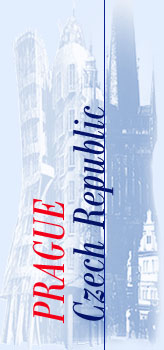EAST BOHEMIA
HRADEC KRÁLOVÉ (pop. 100,800) is one of the oldest towns in the Czech Republic. Established in 1225, it has become the economic and cultural centre of East Bohemia. In the 14th century, Hradec Králové was part of Czech queens' dowry. A century later, the town supported the reformist Hussite movement and the Hussite leader Jan Žižka was buried in a local church. In the 17th and 18th centuries many important buildings were added, including the Bishop's Palace, the Jesuit College, a huge Baroque fortress, as well as numerous houses and churches. The early 20th century saw extensive building activity under the supervision of leading Czech architects Jan Kotěra and Josef Gočár. The Old Town has the status of a protected urban reserve. Its centre is formed by a triangular square dominated by the Gothic Cathedral of the Holy Spirit, built in the early 14th century. The vicinity of Hradec Králové offers many other interesting tourist destinations, such as historic towns, chateaux and fortified castles often bearing traces of the Austro-Prussian war of 1866, and the Český ráj (Czech Paradise), the oldest protected nature reserve in the Czech Republic.
PARDUBICE (pop. 95,000) is a town with a well-preserved historic centre, founded in 1340. It gave Prague its first Archbishop, Arnošt of Pardubice. The originally Gothic town was considerably rebuilt in Renaissance style following devastating fires in the 16th century. It has a Renaissance chateau now serving as a museum and numerous valuable town houses. There is an Art Nouveau theatre and several outstanding modern buildings. Ever since 1874, one of Europe's most challenging horse races, The Grand Pardubice Steeplechase, has taken place here every October. Pardubice is also well-known for its traditional gingerbread production.
KRKONOŠE (The Giant Mountains) Located 130 km northeast of Prague, the Krkonoše Mountains form one of the most beautiful mountainous regions in the Czech Republic. The highest peak is Sněžka (1,602 m, or 5,256 ft). In winter, the region becomes a paradise for both cross-country and downhill skiing. The highest peaks are covered by snow for as many as 180 days a year. In summer, the mountains offer an extensive network of well-marked trekking routes amongst the ridges, peaks, valleys and waterfalls, and providing panoramic views over green meadows and large woodland areas. The river Labe (Elbe) has its source here at an altitude of 1,386 m. Due to its extraordinary natural resources and numerous rare plants, most of the Krkonoše territory received the status of a national park in 1963. In addition to its scenic beauty, the region also offers many fine examples of traditional folk architecture, including the oldest chalet Luční bouda (Meadow Chalet), established in 1625 at an altitude of 1,400 m. The main resorts in the Krkonoše Mountains are Špindlerův Mlýn and Harrachov.
ŠPINDLERŮV MLÝN (pop. 1,400) is an internationally renowned mountain resort for both winter and summer sports. It is located on the slopes of the river Labe (Elbe), at an altitude of 718 m. The resort is surrounded by several peaks, including Medvědín (1,235 m) and the massif Pláně (average altitude 1,100 m) with the St.Peter ski centre. St.Peter is the oldest part of Špindlerův Mlýn. Founded in the 14th century, it was an important silver and copper mining centre until the 18th century. Špindlerův Mlýn has preserved much of its old charm thanks to the many examples of traditional folk architecture. In addition, it offers numerous slopes, ski-lifts and a cableway for downhill skiing, as well as scenic tracks suitable for cross-country skiing and trekking. Nearby there are many destinations for walks and excursions, including waterfalls, valleys with rare flora, the glacial lake Kochelské rybníčky and a number of pretty mountain chalets.
HARRACHOV (pop. 1,300) is a mountain resort suitable for summer and winter recreation, located in the western part of the Krkonoše Mountains. It has been popular with tourists ever since the mid-19th century. Harrachov has a cross-country track, ski-tows, chair-lifts and other facilities for cross-country and downhill skiing, as well as ski-jumping. It is a suitable starting point for walks and excursions to interesting destinations, including the Mumlavské Waterfalls on the river Mumlava, about 3 km from Harrachov, and the 130-metre long Pančavský Waterfall, about 10 km from the town. Harrachov is also known for its traditional glass production, established in 1711.
PEC POD SNĚŽKOU (pop. 600) was established centuries ago as a copper mining town. The metallurgical tradition gave the place its name - "pec" means a furnace. Some of the mines and metallurgical workshops were still in operation at the turn of this century. Today, however, Pec pod Sněžkou is just another popular resort for both summer and winter tourism and a good starting point for excursions to the eastern part of the Krkonoše Mountains. It has a variety of good slopes for downhill skiing as well as tracks for cross-country skiing. |

